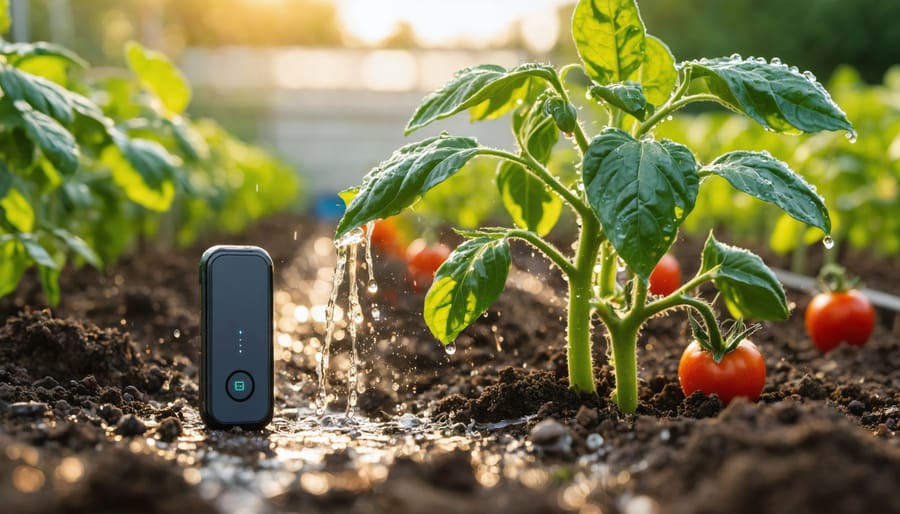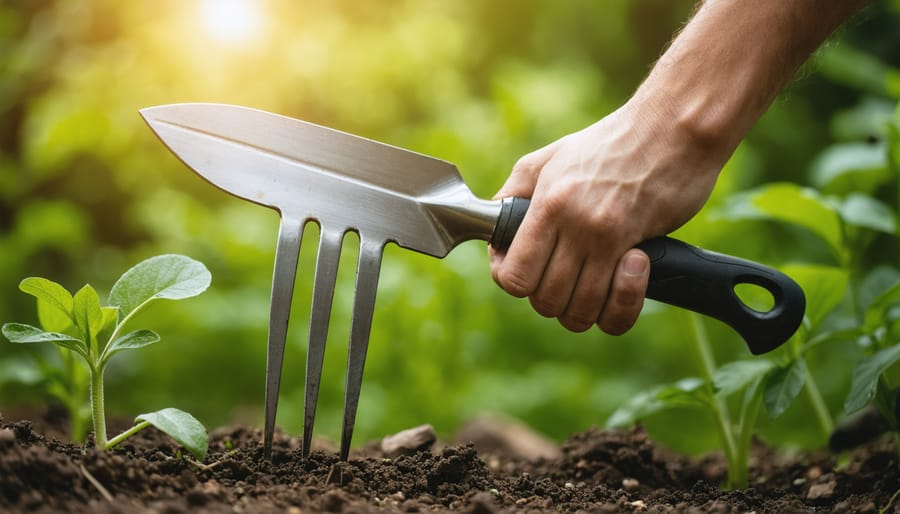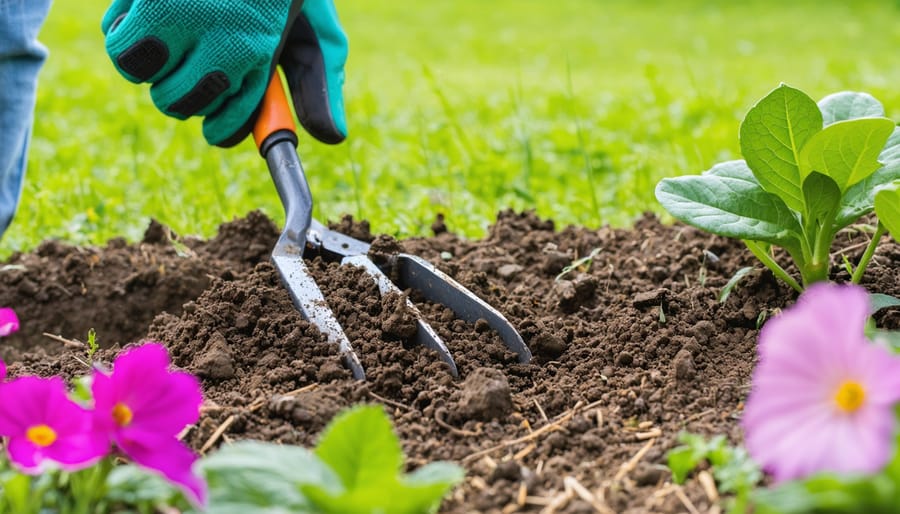Transform your backyard into a thriving, zero-waste garden paradise by mastering the art of gardening zero – a revolutionary approach that combines traditional growing methods with modern sustainability practices. This game-changing technique eliminates waste, reduces water consumption by up to 70%, and creates a self-sustaining ecosystem right in your garden.
Picture harvesting fresh vegetables while generating absolutely zero garden waste. From kitchen scraps becoming rich compost to rainwater harvesting systems feeding your plants, gardening zero transforms every potential “waste” product into a valuable resource. Even fallen leaves and pruned branches find new purpose as natural mulch or habitat creation.
What sets gardening zero apart is its perfect blend of environmental responsibility and practical benefits. By closing the loop on garden waste, you’ll save money on fertilizers and soil amendments while producing more abundant harvests. Your plants grow stronger, healthier, and more resilient, thanks to the rich, living soil ecosystem that develops naturally through this method.
Whether you’re a seasoned gardener or just starting out, gardening zero offers an accessible path to sustainable growing that works in any space – from sprawling backyards to compact balcony gardens. The principles are simple, the results are extraordinary, and the positive impact on our planet is immeasurable.
What Makes Gardening Zero Different
The No-Waste Philosophy
At the heart of gardening zero lies a commitment to eliminating waste while maximizing every resource at our disposal. This approach aligns perfectly with no-dig gardening methods, where we work in harmony with nature’s existing systems. Every element in your garden serves multiple purposes: fallen leaves become mulch, kitchen scraps transform into rich compost, and even weeds can be repurposed as green manure.
Understanding the environmental impact of gardening helps us make better choices. In gardening zero, water conservation takes center stage through techniques like rainwater harvesting and drip irrigation. We also focus on closing the loop by saving seeds, propagating plants from cuttings, and creating our own organic fertilizers from garden waste.
The beauty of this philosophy lies in its simplicity: nothing goes to waste, and everything serves a purpose. Even plant trimmings and pruned branches can become natural supports for climbing plants or material for homemade plant markers. By thinking creatively about how we use and reuse materials, we create a self-sustaining garden ecosystem that thrives with minimal external inputs.

Cost-Saving Benefits
Switching to gardening zero can lead to significant cost savings compared to traditional gardening methods. By eliminating the need for chemical fertilizers and pesticides, you can save anywhere from $50 to $200 annually. The initial investment in quality composting equipment pays for itself within the first year through reduced waste management costs and free, nutrient-rich soil amendments.
Water conservation practices in gardening zero can cut your water bill by 30-50% through smart irrigation techniques and mulching. Many gardeners report saving $10-30 monthly on their water bills during growing seasons. Additionally, seed saving from your chemical-free plants eliminates the need to purchase new seeds every season, saving $20-40 annually.
The cost benefits extend beyond direct savings. By creating your own compost, you’ll save $5-10 per bag on store-bought versions. Growing your own organic produce can reduce grocery bills by $30-50 monthly during peak seasons. Plus, the long-term soil health improvements mean less need for amendments and replacements, leading to sustained savings year after year.
Remember, while some initial investments might be necessary, the return on investment typically becomes apparent within the first growing season.
Essential Tools for Gardening Zero
Basic Tool Kit Review
Starting your gardening zero journey doesn’t require an extensive collection of tools, but having the right essential gardening tools will make your experience much more enjoyable and successful. Let’s explore the must-have items for your basic toolkit.
First on the list is a quality pair of pruning shears. These will be your constant companion for trimming plants, harvesting, and maintaining proper growth. Look for ergonomic handles and bypass-style blades for clean cuts that promote plant health.
A sturdy hand trowel is indispensable for container gardening and raised beds. Choose one with a comfortable grip and durable construction – stainless steel is ideal for longevity. Pair this with a hand fork for loosening soil and removing unwanted weeds.
Don’t overlook the importance of a watering can with a removable rose (sprinkler head). This allows you to control water flow, from gentle sprinkles for seedlings to stronger streams for established plants. A one-gallon capacity usually suffices for most small gardens.
For soil preparation and maintenance, include a small hand rake and cultivator. These tools help you maintain proper aeration and work in amendments without disturbing your plants’ root systems.
Finally, invest in a good pair of gardening gloves to protect your hands. Look for water-resistant materials with reinforced fingertips for durability. Consider having two pairs: one lightweight for delicate tasks and another heavy-duty pair for rougher work.
Remember, quality tools, while initially more expensive, will last longer and make your gardening experience more enjoyable. Start with these basics and add specialized tools as your garden grows and your needs evolve.
Sustainable Alternatives
When embracing gardening zero, choosing the right sustainable gardening tools makes a significant difference in both your environmental impact and gardening success. Consider switching to tools made from renewable materials, such as bamboo handles and recycled metal components. Hand tools like wooden-handled trowels and natural fiber twine are excellent alternatives to plastic versions.
DIY alternatives can be surprisingly effective and budget-friendly. Transform old kitchen containers into seed starting trays, use newspaper to create biodegradable seed pots, or repurpose wooden pallets for vertical gardens. Coffee grounds make excellent fertilizer, while eggshells provide natural pest control and calcium for your plants.
For watering solutions, install a rain barrel system to collect rainwater, reducing reliance on municipal water supplies. Drip irrigation systems made from recycled materials offer efficient water distribution while minimizing waste. Consider creating your own compost bin using reclaimed wood or wire mesh – it’s a fantastic way to reduce kitchen waste while producing nutrient-rich soil amendment.
Tool maintenance plays a crucial role in sustainability. Instead of replacing worn tools, learn basic repair skills. Sharpen blades regularly, oil wooden handles with natural oils, and store tools properly to extend their lifespan. Many experienced gardeners keep their tools functioning perfectly for decades through proper care.
Remember, transitioning to sustainable alternatives doesn’t need to happen all at once. Start with replacing one or two items and gradually build your collection of eco-friendly tools as your current ones wear out. This approach makes the switch more manageable and cost-effective while maintaining your gardening momentum.

Real Results from My Garden
Before and After Comparison
When comparing traditional gardening methods to the gardening zero approach, the differences are striking. In conventional gardening, you might spend hours tilling soil, dealing with weeds, and battling pests, often with mixed results. A typical 100-square-foot garden plot traditionally requires about 8-10 hours of weekly maintenance during peak growing season.
With gardening zero, many gardeners report cutting their maintenance time in half while achieving comparable or better yields. The initial setup of a gardening zero system takes about 4-6 hours, but ongoing maintenance drops to just 3-4 hours weekly. Weed problems decrease by approximately 80% in the first season, and water usage typically reduces by 60-70%.
Let’s look at tomato production as an example. Traditional garden beds might yield 20-25 pounds of tomatoes per plant, while gardening zero systems consistently produce 25-30 pounds per plant, with some gardeners reporting even higher yields. The quality of produce tends to be more consistent too, with fewer blemishes and disease issues.
Another significant difference is soil health. Traditional gardens often need seasonal amendments and regular fertilization. Gardening zero systems build soil health naturally over time, requiring minimal inputs after the initial setup. After just one season, most gardeners notice richer soil with better structure and increased earthworm activity.
The cost comparison also favors gardening zero in the long run. While initial setup costs might be 20-30% higher than traditional methods, the reduced need for tools, fertilizers, and water leads to significant savings from year two onward.

Cost Analysis
Starting a zero-waste garden can actually save you money in the long run, though there might be some initial setup costs. Let’s break down the numbers to give you a clear picture of the potential savings.
Initial investments typically include compost bins ($50-100), rain barrels ($60-120), and basic tools ($100-150). While this might seem substantial, these are one-time purchases that last for years. The real savings come from reducing ongoing expenses.
By composting kitchen scraps and yard waste, you can save $20-30 per month on store-bought fertilizers and soil amendments. Collecting rainwater can cut your water bill by 30-50% during growing seasons, translating to approximately $100-200 annually in many regions.
Growing your own plants from seeds instead of buying seedlings saves about $3-4 per plant. For a typical home garden with 20-30 plants, that’s $60-120 saved each season. Saving and storing your own seeds eliminates the need to buy new ones each year, saving another $40-50 annually.
The most significant savings come from reduced grocery bills. A well-planned zero-waste garden can provide $500-1000 worth of fresh produce annually, depending on your climate and growing space. Factor in the environmental benefits and improved produce quality, and the return on investment becomes even more attractive.
Remember, these figures are estimates and can vary based on your location, garden size, and specific practices. The key is to start small and gradually expand your zero-waste techniques as you become more comfortable with the process.
Common Challenges and Solutions
Getting Started Hurdles
Starting your gardening journey from zero can feel overwhelming, but understanding common challenges and their solutions will help you navigate these initial hurdles with confidence. Many beginners face similar obstacles, and they’re all completely normal parts of the learning process.
One of the most frequent challenges is uncertainty about where to begin. The solution is simple: start small. Choose one or two vegetables you love eating, or select easy-growing plants like herbs or lettuce. This approach helps build confidence without becoming overwhelming.
Soil quality often poses another hurdle. New gardeners might find their soil too sandy, clay-heavy, or lacking nutrients. Rather than getting discouraged, focus on soil improvement through composting and organic matter addition. Remember, great soil develops over time, not overnight.
Weather unpredictability can catch newcomers off guard. Combat this by researching your local climate patterns and frost dates. Installing simple protection like row covers or cold frames can help extend your growing season and protect young plants.
Time management is another common concern. The key is establishing a realistic routine. Even 15 minutes daily can maintain a small garden effectively. Focus on essential tasks like watering and basic weeding rather than trying to do everything at once.
Pest problems might seem daunting initially, but they’re manageable with organic solutions and prevention strategies. Start with companion planting and natural deterrents before considering more intensive measures.
Remember, every experienced gardener started exactly where you are. Each challenge overcome adds to your gardening wisdom and brings you closer to creating your dream garden.
Long-term Maintenance Tips
Maintaining a successful gardening zero system requires consistent attention and a well-planned approach. Start by establishing a regular monitoring schedule – spend at least 15 minutes daily checking your plants, soil moisture, and system components. This helps you catch potential issues before they become problems.
Keep detailed records of your plant growth, watering schedules, and any challenges you encounter. These notes will prove invaluable as you fine-tune your system over time. Remember to clean and sanitize your growing containers every season to prevent disease and pest buildup.
Pay special attention to your water quality and pH levels monthly. Even small variations can impact plant health significantly. Install a simple filtration system if your water contains high levels of chlorine or other chemicals that might harm your plants.
Rotate your crops seasonally to maintain soil health and prevent nutrient depletion. Consider adding companion plants that naturally deter pests and enhance growth. Regular pruning helps maintain airflow and prevents overcrowding, which is essential in space-efficient systems.
Don’t forget about your equipment maintenance. Check pumps, timers, and irrigation systems quarterly for optimal performance. Replace worn-out parts promptly to avoid system failures. Also, maintain a small stock of essential supplies like growing medium, nutrients, and backup equipment parts.
Building a community with other gardening zero enthusiasts can provide valuable support and knowledge-sharing opportunities. Share your experiences and learn from others to continuously improve your garden’s performance.
Embracing gardening zero isn’t just about adopting a new gardening method – it’s about joining a movement that promotes sustainability, self-sufficiency, and a deeper connection with nature. Through this approach, you’ll discover the joy of growing your own food while minimizing waste and environmental impact.
As we’ve explored throughout this article, gardening zero offers numerous benefits: reduced water consumption, lower maintenance requirements, and improved soil health. The beauty of this method lies in its accessibility – whether you have a sprawling backyard or a tiny balcony, you can adapt these principles to suit your space and lifestyle.
Remember, starting small is perfectly fine. Begin with a single container or a small raised bed, and gradually expand as your confidence grows. The satisfaction of harvesting your first zero-waste crops will inspire you to explore further possibilities.
By implementing the techniques we’ve discussed – from composting kitchen scraps to collecting rainwater and choosing native plants – you’re not just creating a garden; you’re contributing to a more sustainable future. The community of gardening zero practitioners continues to grow, sharing knowledge and supporting one another in their journey.
Take that first step today. Start planning your garden zero project, and join the thousands of gardeners who are already experiencing the rewards of this revolutionary approach. Your future self – and the planet – will thank you for it.




